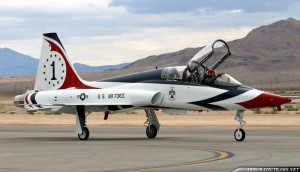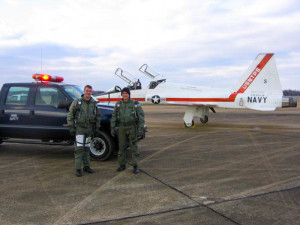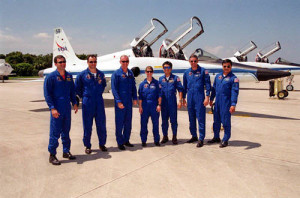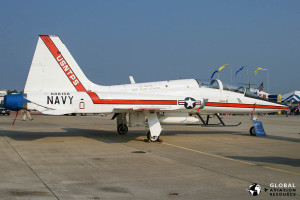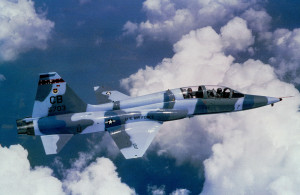Flight Control Failure in the Mountains
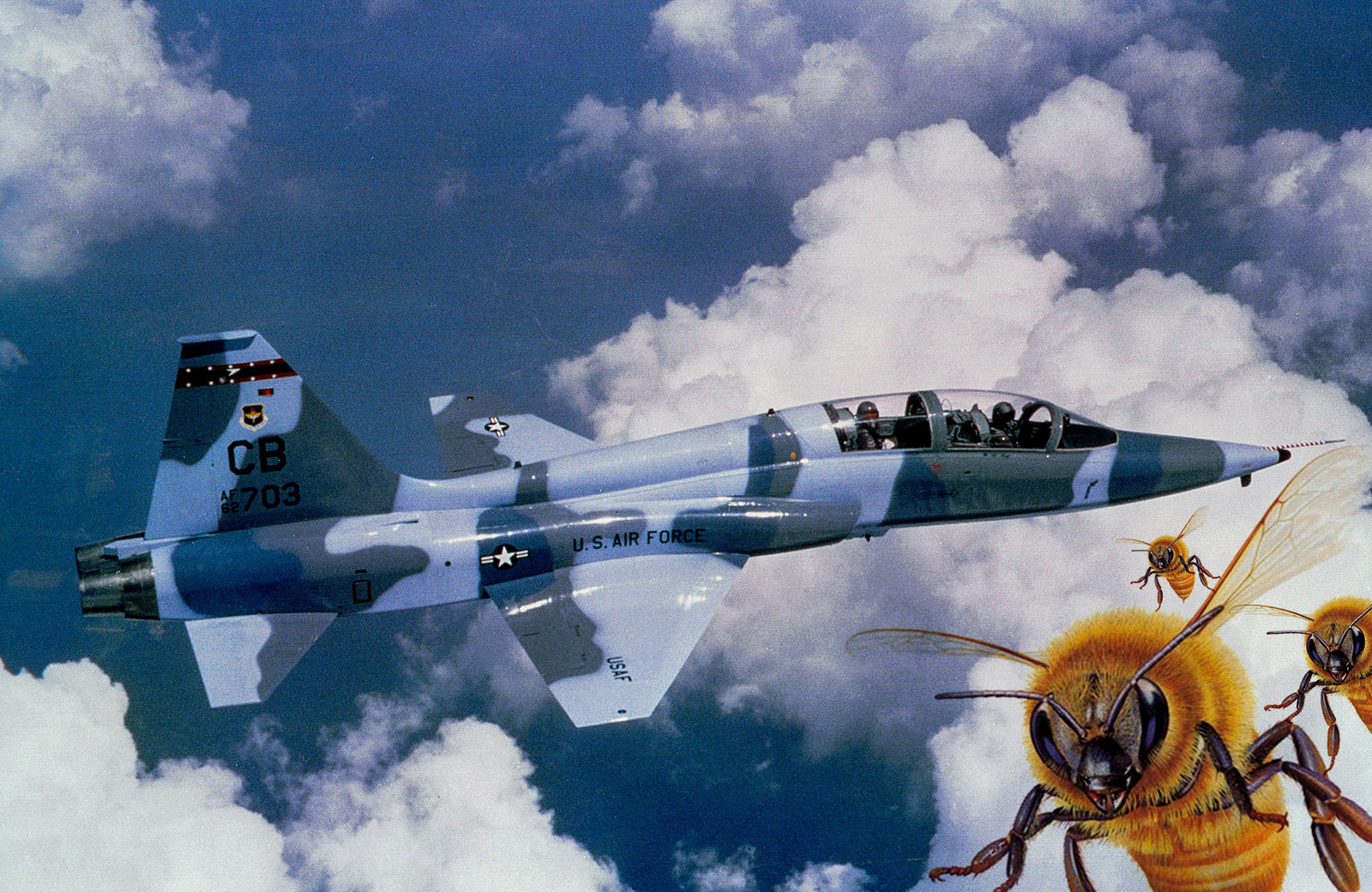
The Long Weekend Out
I’m Not Going to be in Monday…
One of the benefits of being an Introduction to Fighter Fundamentals (IFF) instructor was the unlimited use of the T-38C for weekend cross countries. IFF is a six week course designed to take the top pilot training graduates and prepare them to fly fighters. A typical course for a student bound for F-16’s is four formation flights emphasizing tactical formation keeping, the cornerstone of our business. After that, there are four offensive BFM flights. Basic Fighter Maneuvers (BFM), the century old art of maneuvering your jet in relation to another in order to kill the other pilot with your jet’s cannon. In offensive BFM you start at a position of advantage usually 3-9 thousand feet behind the other jet at the start of the fight. With that advantage, you should have closed in and killed the defending jet by about the time you both have turned two complete circles. For Defensive BFM, you start with the disadvantage. The goal is to survive. Period. There are four rides of each in IFF. For the F-16 guy, there are two high aspect rides. This is where you start nose to nose closing at 1,000 knots and pass around 500 feet from each other. The fight starts there, may the best man win. As an IFF instructor, you really are never flying for your own proficiency. If you are in the backseat of a student’s jet, he is flying as if he is solo. If you are the direct support instructor, all of your gas goes to the student’s training. As such, we take advantage of the cross country opportunities and travel the country solo. There is nothing like traveling at .99 MACH at 41,000ft touring the country in your personal fighter jet. Especially since it is on the taxpayer’s dime. In reality, this is truly the only way instructors are able to maintain the proficiency of navigating the national airspace system and remaining current on instrument approach procedures. This is also the same sort of proficiency flying astronauts do in NASA T-38s. One such weekend at Moody AFB in Valdosta GA, another instructor and I took our T-38s to see some friends in Tucson. This is a three hop, meaning 2 stops for gas enroute. Typically we stop going west at Chennault field, if you order ahead they will have some crawfish etouffee ready to eat while your jet is being fueled. There is also a freezer with ice cream bars. People are really nice to you when you buy $3,000 of fuel. Next stop is west of Dallas for BBQ. You’d get fat doing this except the T-38 air conditioning doesn’t work on the ground much at all, so you basically sweat a lot. In Tucson we parked on the edge of the ramp at the FBO (fixed base operator – basically where you park and fuel airplanes). We left the jets for Saturday and Sunday and returned on Monday. To keep birds and debris out of the engines we put nacelle covers on the intakes and exhaust covers over the engine nozzles. Normally we do some advanced origami and get them folded tight enough to go under the rear cockpit ejection seat. Our luggage for the weekend is jammed elsewhere throughout the cockpit. You pack light. The T-38 cannot start on its own. To start a jet engine, you need some sort of way to get the engine rotating. Your car has a battery powered starter for this. The T-38 has no starter motor, so the FBO must have an air cart to hook up to the engine and blow low pressure air through to turn the motor. Once you do, you add fuel and ignition and presto! you have a running jet engine. CAUTION: Never land a T-38 where they do not have an air cart! When we walked to the jets the lineman walked with me and I was telling him how to use the air cart to start the engines. On the way had quickly pulled the covers off my jet on the way and left them in piles on the ground. Because I am a nice guy, as my buddy was up setting up his cockpit I took the lineman over to his jet and started pulling all his covers. I paused and didn’t remove the aft engine cover because the air intake where he would plug the cart was just in front of it. We stooped down and crawled up just past the aft engine cover and I was showing him the panel.While I was there I felt a large buzzing mass behind me...
I turned and looked and on the aft engine cover there was a mass of killer bees the size of a large beach ball three feet from me. We both saw it at the same time and cautiously and silently moved away. I got my buddy out of the cockpit and we went inside... Being Tucson, the FBO had had these problems before. The week prior a hive of killer bees formed on their entrance. These bees move quickly and can nest almost anywhere with very little notice. They called and exterminator and he was there within the hour. He showed up wearing one of those white space suit looking things and carrying garbage bags and a sprayer. He sprayed the hive with dish soap (it makes it so they can’t fly), then he swept them into garbage bags. They freeze the bees to kill them. The exterminator told me I was very lucky. You see, if I were removing the covers from my own jet, or if my buddy had gotten there before me, we would have just yanked them off from above. In this case, I crouched under the jet first to show the lineman. The exterminator told us, had we removed the cover (3ft from the hive) we would have been attacked and stung over 10,000 times. We would have been dead. Who knew a little act of kindness of helping a brother out setting up his jet would have saved my life? We called back to the squadron telling them we wouldn’t be back at Moody and would need one more day on the road. We could hear the laughter in the background. Everyone thought we had gotten drunk or met some ladies, something of that nature and just wanted to stay on the road. We heard some of the instructors shouting into the phone “Bees!?!? They couldn’t think of something better?”Related posts


